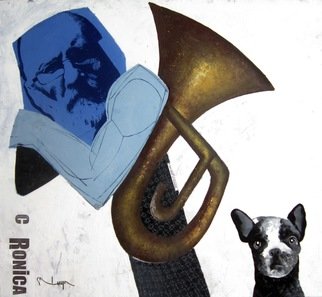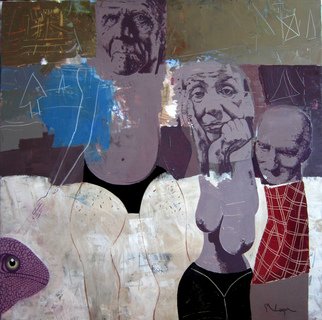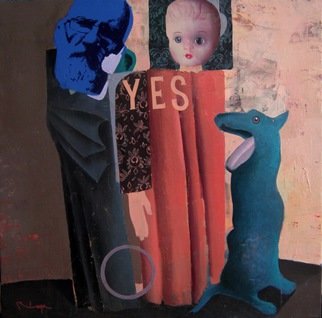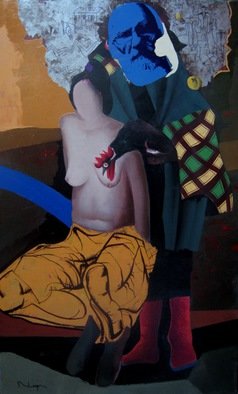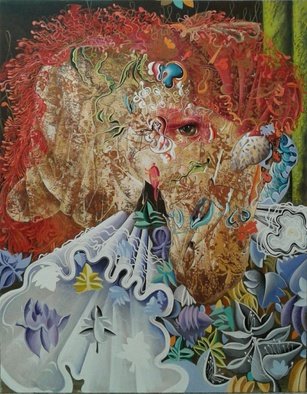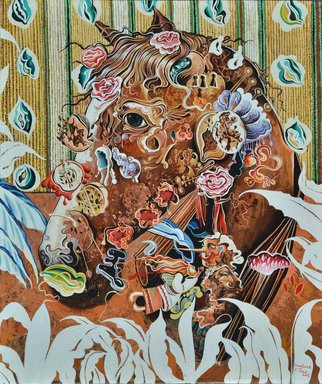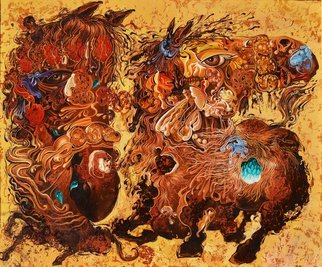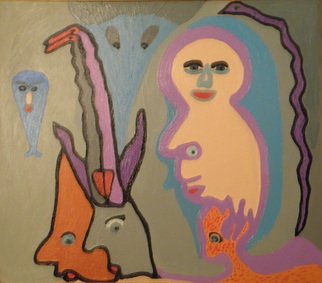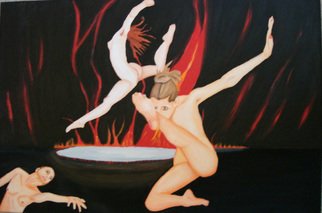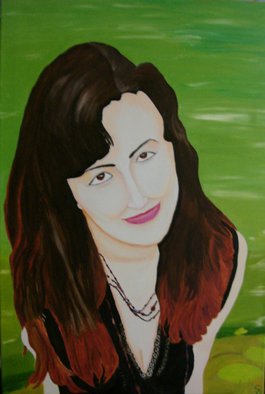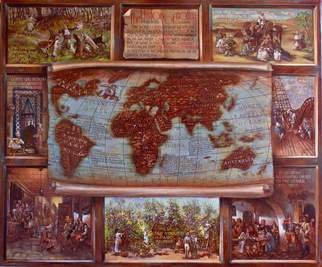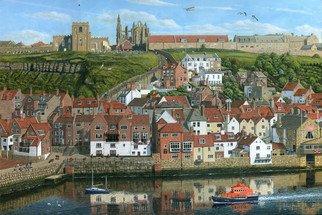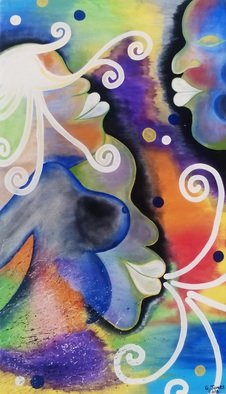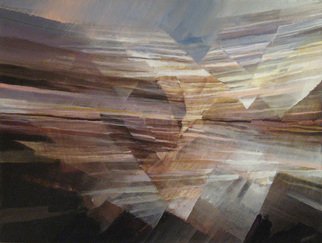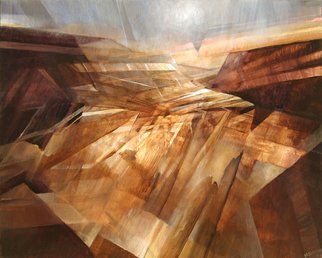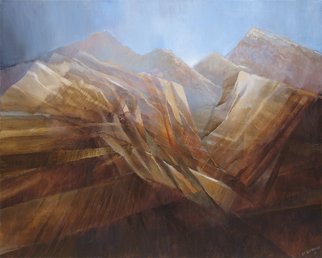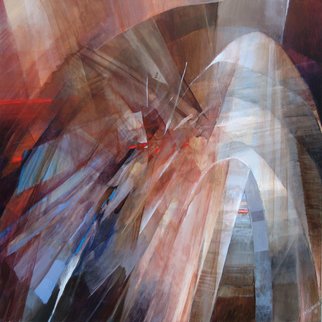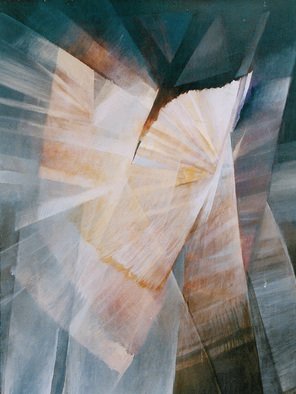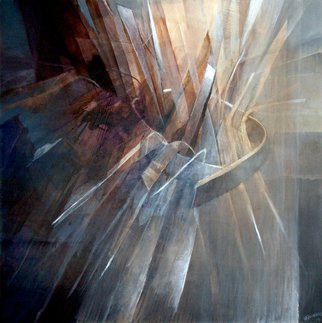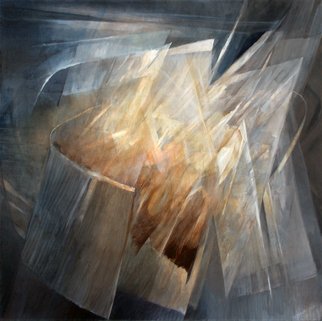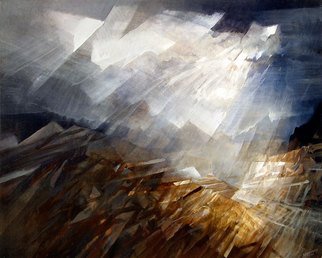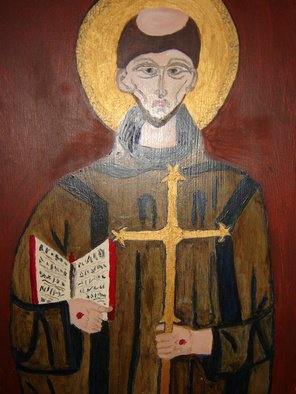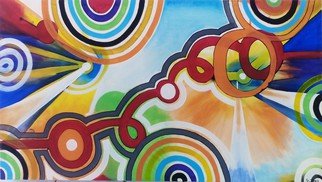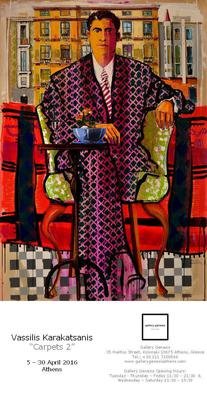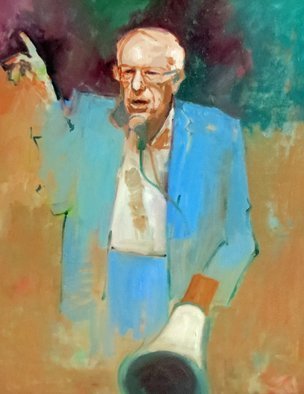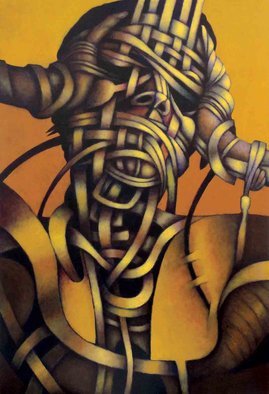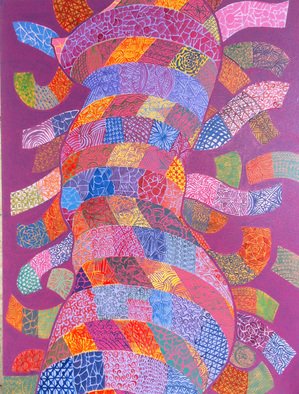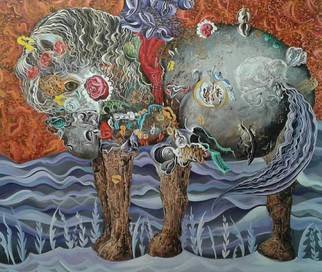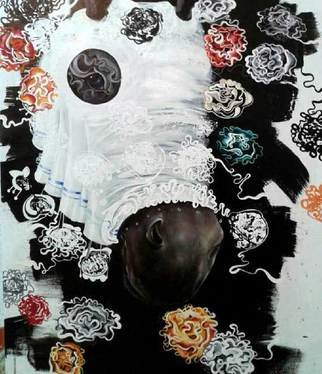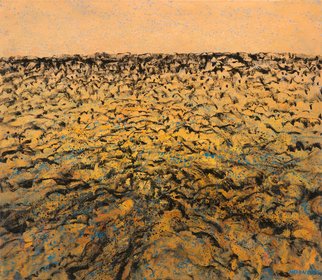Paintings For Sale - Price Range: $5000 - $10000
Page 9 of 78

Discover 2,244 original painting artworks for sale between $5000 - $10000. Contemporary emerging artists: Gheorghe Lungu, Milutin Obradovic, Rubi Assa, Clifford Riley, Vali Irina Ciobanu, Richard Harpum, Geary Jones, Rochelle Blumenfeld, Costanza Zappa, Vassilis Karakatsanis, Jerry Ross, Ruben Miranda, Miodrag Misko Petrovic are exhibiting their affordable original art. You can buy artwork online and browse 78 pages for more originals at the end of this page. To view detailed information for any of these artworks click the image or browse the artist's portfolio website.
MORE »
Richard Harpum - I find painting to be one of my most satisfying pastimes. Although I drew and painted as a youngster, a career in the British Army followed by many years as a senior executive in business, meant that I did not start pursuing my passion again until I was in my 50s. I am so glad that I did. Although I love the Impressionists, the engineer in me means that I have a great deal of difficulty being "loose" in my own work. Having tried and failed, I decided to take the route of being a realist artist, and recently coined "High Definition Art" as my slogan. However, I am not interested in achieving photorealism. I want people to see that my pictures are paintings, and would hate the thought that someone had to take a close look to discover that one of my paintings was not a photograph. My time-consuming technique pretty much prohibits painting en plein air, so I use photographs for reference in my studio. Consequently, I take a camera everywhere, although this drives my wife nuts! However, I deliberately avoid painting a direct copy of any of my photos. Indeed, with each new painting, I seem ...
Costanza Zappa - Costanza Zappa (www.costanza.net). Farmacista, nata a Milano , acquarellista, sta portando avanti una singolare ricerca nell'alchim|a dei colori e dei soggetti pittorici, passando con estrema disinvoltura dal figurativo alle originali interpretazioni astratte. In entrambi i generi se ne riconosce l'impronta personale nel particolare utilizzo della pennellata. Si intuisce un percorso artistico preciso ed in continuo divenire. La sua formazione si >> avvalsa dell'aiuto di importanti maestri contemporanei quali Luigi Zucchero e Antonio Galloni. ...
Vassilis Karakatsanis - 'Alcohol 2009-2010' Catalogue 10/2010 ATHENS Wishing to interpret a work of art through a written text is undoubtedly a difficult task and I often wonder whether it is even necessary. A multitude of pages are written every day all over the world with the purpose of explaining the existence, necessity and worth of various instances of artistic expression. In and of itself, this may trick the writer into stating points of view that grow out of the tendencies of a particular era, out of a stagnant aesthetic, out of people who say one thing and do another and, through this process, give a nod of approval to an "ego" that is adventitious, selfish, and falsely illustrated, while they forget that the approach to art requires poise, profound knowledge, simplicity and honesty. Considering the speed with which, in the past few years, legions of artists have surfaced, the parameter that is used to measure the art trade as carried out by certain people who view their artistic work as shares in a unique yet nonetheless effective stock market, and whose sole purpose is financial gain, is an actual fact and, as far as many are concerned, lawful in a...
Jerry Ross - Manifesto of American Verismo By Jerry Ross, 2012 "American verismo", a movement that I have recently founded, is a catch-all phrase for an artistic style that draws its main inspiration from Italian art, both classical and modern. There is an implied nostalgia for work done "dal vero" (after life) whether classical (Raphael, Rubens, or Caravaggio, etc.) or 19th century (the Tuscan I Macchiaioli school) or more contemporary. Verismo is somewhat akin to contemporary "atelier realism" but the latter has been criticized for an academic uniformity and its over attention to details. American verismo is more poetic and linked to post-impressionism, the Milan-based Scapigliatura ('wild hair') movement, and the I Machiaioli's commitment to social issues. But like atelier realism, American verismo is associated with a painterly sketching style, use of broad brushstrokes, and the alla prima, "direct attack" technique of painting. It is also linked to all'aperto (open air) impressionist-style landscape painting. In short, to pleinairism which has become widely popular in recent years. I first introduced the term during several classes he taught at the Maude Kerns Art Center in Eugene and then later at the "Angels Fight Road Art Center" plein air retreat...
Ruben Miranda - As I see it, the human figure embodies what life is all about, in more than the physical plane. It is the symbolic image of existence. Through the years, my morphic re-invention of the human figure has given meaning to the search for my own pictorial language. The faces, warriors, torsos and other images in my artwork reveal the complexity of my spirit....
(Page 9 of 78) - MORE ARTWORKS
Artists Describing Their Art:
Milutin Obradovic - The persistence of time and an endless search for the explanation of transience through themes, i.e. a way called life, or searching for the essence is the top or the bottom of the same idea, message, sign, or manaEURtms fear to put it all under oneaEURtms skin and breathe with it. Art and its unfathomable distance decorated with colours, movements or tones are a way of putting a burden of subconscious questions and incomplete answers on oneaEURtms back. Answers which will only in the future find themselves in the box storing the primordial findings on purpose. My paintings of horses are mysterious and they entice you into starting the dance of fire and ice. They are in an eternal impulse which is closer to coming back than leaving. They will never lie to the observer, or try to take him/her where they have already been and where he/she used to meet them. The horses will always take them to the unfamiliar places full of hope and endless existence. They are perpetual and always self-sufficient. My art and my search for the essence we call life is actually a burden on the back of...Richard Harpum - I find painting to be one of my most satisfying pastimes. Although I drew and painted as a youngster, a career in the British Army followed by many years as a senior executive in business, meant that I did not start pursuing my passion again until I was in my 50s. I am so glad that I did. Although I love the Impressionists, the engineer in me means that I have a great deal of difficulty being "loose" in my own work. Having tried and failed, I decided to take the route of being a realist artist, and recently coined "High Definition Art" as my slogan. However, I am not interested in achieving photorealism. I want people to see that my pictures are paintings, and would hate the thought that someone had to take a close look to discover that one of my paintings was not a photograph. My time-consuming technique pretty much prohibits painting en plein air, so I use photographs for reference in my studio. Consequently, I take a camera everywhere, although this drives my wife nuts! However, I deliberately avoid painting a direct copy of any of my photos. Indeed, with each new painting, I seem ...
Costanza Zappa - Costanza Zappa (www.costanza.net). Farmacista, nata a Milano , acquarellista, sta portando avanti una singolare ricerca nell'alchim|a dei colori e dei soggetti pittorici, passando con estrema disinvoltura dal figurativo alle originali interpretazioni astratte. In entrambi i generi se ne riconosce l'impronta personale nel particolare utilizzo della pennellata. Si intuisce un percorso artistico preciso ed in continuo divenire. La sua formazione si >> avvalsa dell'aiuto di importanti maestri contemporanei quali Luigi Zucchero e Antonio Galloni. ...
Vassilis Karakatsanis - 'Alcohol 2009-2010' Catalogue 10/2010 ATHENS Wishing to interpret a work of art through a written text is undoubtedly a difficult task and I often wonder whether it is even necessary. A multitude of pages are written every day all over the world with the purpose of explaining the existence, necessity and worth of various instances of artistic expression. In and of itself, this may trick the writer into stating points of view that grow out of the tendencies of a particular era, out of a stagnant aesthetic, out of people who say one thing and do another and, through this process, give a nod of approval to an "ego" that is adventitious, selfish, and falsely illustrated, while they forget that the approach to art requires poise, profound knowledge, simplicity and honesty. Considering the speed with which, in the past few years, legions of artists have surfaced, the parameter that is used to measure the art trade as carried out by certain people who view their artistic work as shares in a unique yet nonetheless effective stock market, and whose sole purpose is financial gain, is an actual fact and, as far as many are concerned, lawful in a...
Jerry Ross - Manifesto of American Verismo By Jerry Ross, 2012 "American verismo", a movement that I have recently founded, is a catch-all phrase for an artistic style that draws its main inspiration from Italian art, both classical and modern. There is an implied nostalgia for work done "dal vero" (after life) whether classical (Raphael, Rubens, or Caravaggio, etc.) or 19th century (the Tuscan I Macchiaioli school) or more contemporary. Verismo is somewhat akin to contemporary "atelier realism" but the latter has been criticized for an academic uniformity and its over attention to details. American verismo is more poetic and linked to post-impressionism, the Milan-based Scapigliatura ('wild hair') movement, and the I Machiaioli's commitment to social issues. But like atelier realism, American verismo is associated with a painterly sketching style, use of broad brushstrokes, and the alla prima, "direct attack" technique of painting. It is also linked to all'aperto (open air) impressionist-style landscape painting. In short, to pleinairism which has become widely popular in recent years. I first introduced the term during several classes he taught at the Maude Kerns Art Center in Eugene and then later at the "Angels Fight Road Art Center" plein air retreat...
Ruben Miranda - As I see it, the human figure embodies what life is all about, in more than the physical plane. It is the symbolic image of existence. Through the years, my morphic re-invention of the human figure has given meaning to the search for my own pictorial language. The faces, warriors, torsos and other images in my artwork reveal the complexity of my spirit....
